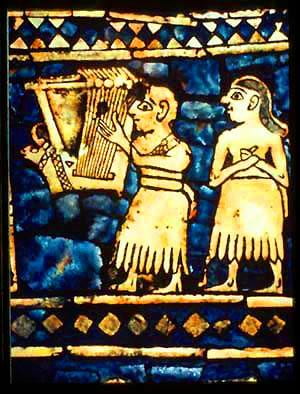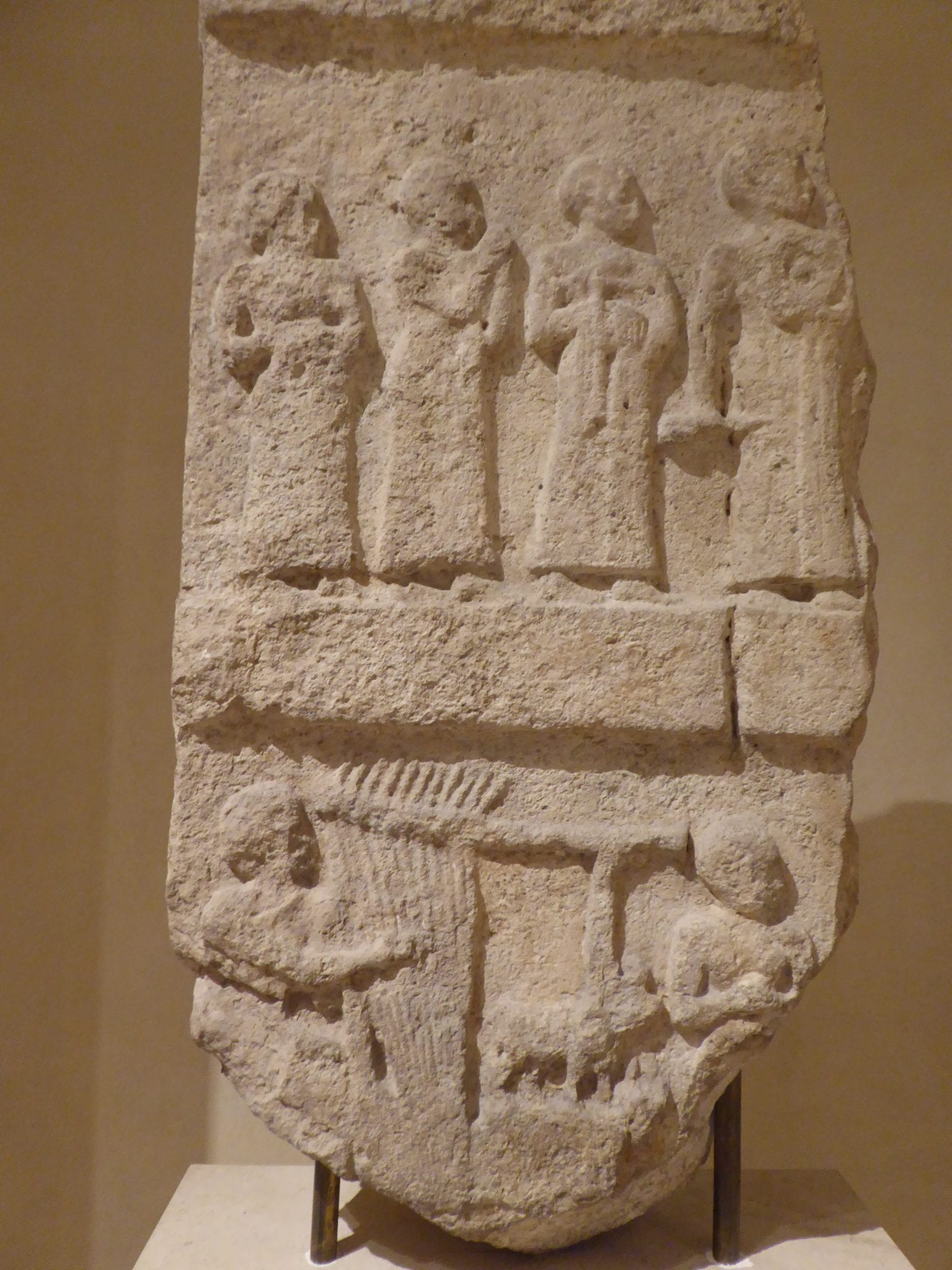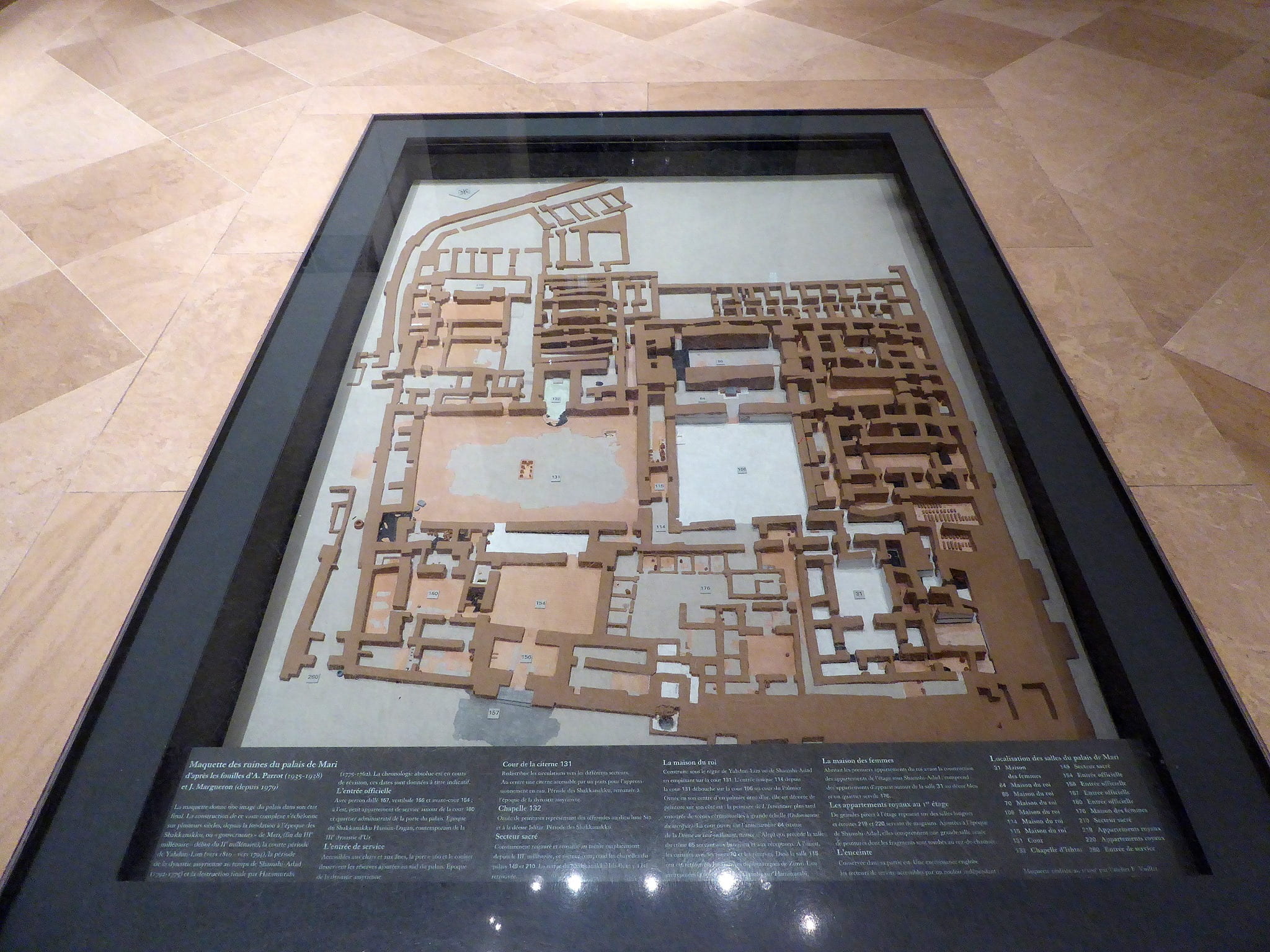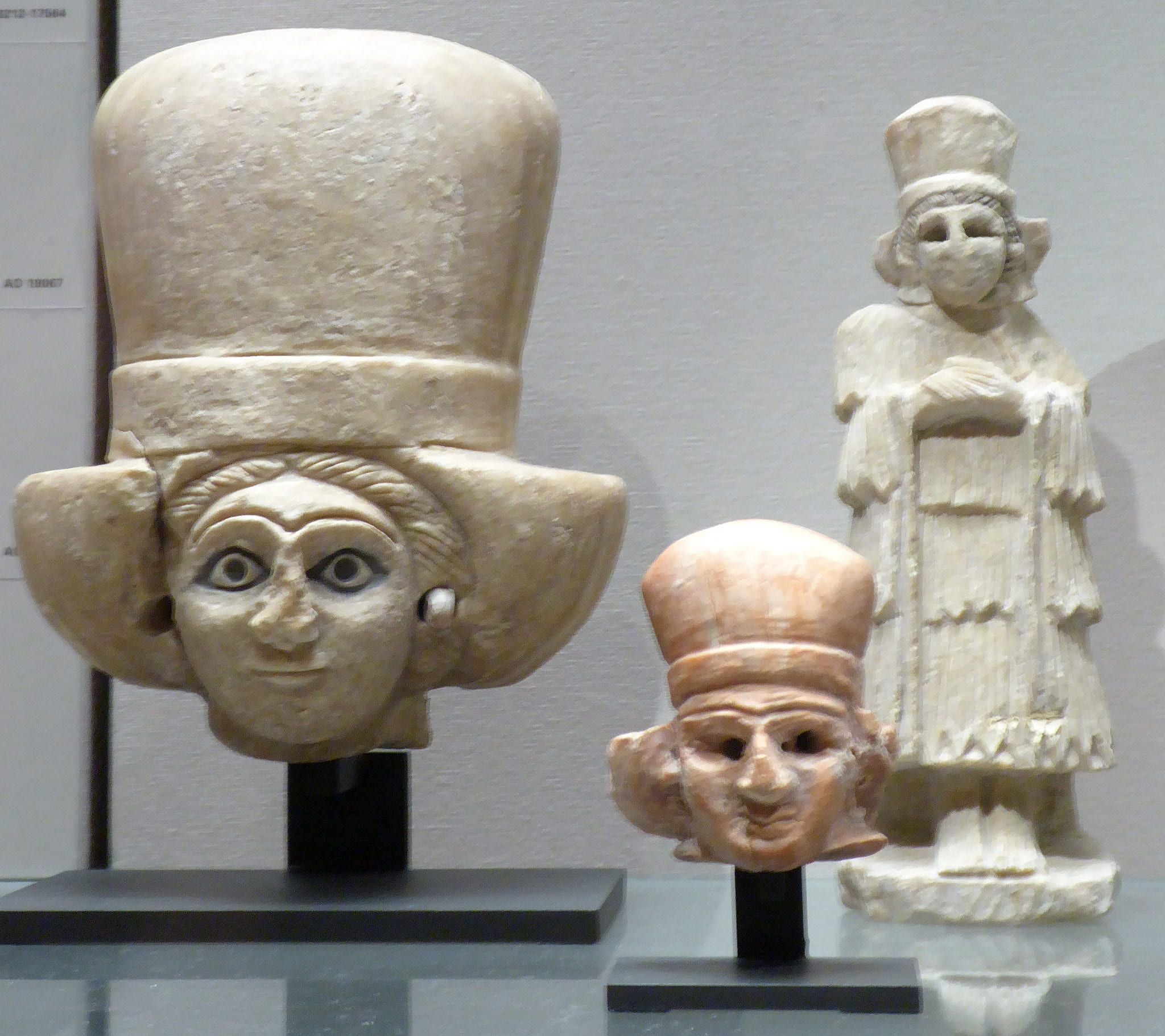By guest contributor Lynn-Salammbô Zimmermann

A singer and a musician on the royal standard of Ur.
In the mid-14th century BCE, a group of young female singers contracted an unknown disease. A corpus of letters from Nippur, a religious and administrative center in the Middle Babylonian kingdom (modern-day Iraq), tells us about the medical condition of these young females, who learned to become singers sharing the same quarters (cf. BE 17, 31, 32, 33, 47, N 969, and PBS 1/2, 71, 72, 82).
The letters about these girls’ medical conditions were exchanged between the physician Šumu-libši (and his colleague Bēlu-muballiṭ) and the governor of Nippur, Enlil-kidinnī. Šumu-libši provides the governor with meticulous reports of the girls’ symptoms, as well as his attempts to cure them. The symptoms include an inflammation of the chest, fever, perspiration and coughing. The girls are treated with poultices on the chest. Thus it is likely that Šumu-libši was an asû, a physician, and not an exorcist. An asû would have concentrated on the natural causes of symptoms, applying drugs and using the scalpel when dealing with the physical side of the disease, while an exorcist would have also spoken incantations (Geller, 2001: 27-33, 43-48, 56-61). So far the focus of research has unfortunately only been on the sender and recipient of these letters, but not on the female patients, due to the lack of information and their passive role in the narrative. This article aims to shift the perspective.
Unfortunately, we really do not know much more about these girls. We do not even know their names. They are all called “the daughter of NN” with the exception of a woman named Eṭirtu, who may have been in a higher position, such as that of a supervisor or a teacher.
The girls were most likely trained to become singers in a palace or a temple complex (Sallaberger, Vulliet, 2005: 634). Every report by Šumu-libši begins with the greeting: “Your servant Šumu-libši: I may die as my lord’s substitute. The male and female musicians, Eṭirtu and the house of my lord are well.” The governor, who is inquiring after the girls’ health, was not only responsible for the provincial administration of Nippur, but also for its temples, as he also held the position of the highest priest in the city (Petschow, 1983: 143-155; Sassmannshausen, 2001: 16-21). Additionally, he owned large estates, so we cannot exclude the possibility that he would employ singers for his private entertainment there. Since the kingdom had a patrimonial structure, and the concept of “privacy” separate from an official’s public role did not exist until later, “the house of my lord” could apply not only to the various official households under Enlil-kidinnī’s command, but also to his own estates.

Musicians and singers in Girsu. Louvre Museum, Paris. Photo by Lynn-Salammbô Zimmermann.
In general, musicians, both male and female, had a high status at the royal courts of the Old Babylonian period. This is consistent with the fact that the governor, who held the most important office of the Middle Babylonian kingdom, made inquiries about the young singers’ health. Despite the fact that the girls are rather passive in the letters, they can apparently give orders to the healing specialists, as is reported in the letter BE 17, 47, ll. 4-5: “they bandaged her with a poultice as (she) requested” (Sibbing Plantholt, 2014: 180).
During the Middle Babylonian period, Elamite and Subarean singers can be found at the royal court in Dūr-Kurigalzu (Ambos, 2008: 502). Foreign singers were exchanged as precious diplomatic gifts. Young female musicians often ended up in the royal harems (Ziegler, 2006: 247, 349). Nonetheless, in Mesopotamia—and especially in the “international” Middle Babylonian period—the ethnicity of a person cannot automatically be deduced from the language of their name. That being said, the majority of the names of the fathers of “our” girls appear to be Babylonian, one father bearing a supposedly Hurrian name (Hölscher, 1996: 85).
We can find out more about Šumu-libši’s patients by comparing their situation with that of other female singers in Mesopotamia. This unfortunate case of an epidemic infecting apprentice musicians is reminiscent of another disease among female singers at a royal court, some 400 years earlier (Ziegler, 1999: 28-29). The archive of this royal court, that of king Zimri-Lim (1775-1762 BC) in the city state of Mari (modern-day Syria), documents a large number of female musicians present (Ziegler, 1999: 69-82; Ziegler, 2006: 245). Many of the female musicians at court were actually concubines. We know this because some of them received oil after successfully giving birth, and since they were “unmarried”, we can conclude that they got pregnant by the king as members of his harem. One of Zimri-Lim’s favourite wives actually supervised a number of female musicians, who must have been very young, since according to the oil accounts they only received small allotments. We can see in the accounts of oil for their toilette and for the lighting of the palace quarters that there existed a strict hierarchy among these women (Ziegler, 1999: 22-24, 29-30; Ziegler, 2006: 346). According to their rank, the women received larger or smaller rations. The female singers were among the lower classes of the harem, being supervised by a governess (Lafont, 2001:135-136). In the Middle Babylonian letters, Eṭirtu might have been such a governess.

A model of the royal palace of Mari. The women’s quarters are in the lower right corner. Louvre Museum, Paris. Photo by Lynn-Salammbô Zimmermann.
Contrary to our imagination of an oriental harem, it is attested that these women could move beyond the scope of their quarters (Lafont, 2001: 136; Ziegler, 1999: 15-20). In the younger Middle Assyrian harem edicts, however, which were issued in Assyria during the Middle Babylonian period, the freedom of the women at court was much more limited, rendering them completely dependent on the king and palace officials (Roth, 1997: 196-209). If we assume that the Middle Babylonian patients were singers at court, then—according to the contemporary Middle Assyrian harem edicts—they were kept under strict surveillance by palace officials.
In both cases we see that the apprentices apparently shared the same quarters and had close daily contact with one another. This might have not only lead to the spread of a contagious disease, but also to conflicts: quarrels between women at court were addressed in the Assyrian edicts (Roth, 1997: 201-202). While “our” Middle Babylonian singers’ lives were valuable enough to their employer to receive medical care, the king of Mari ordered his queen in two letters to isolate sick women from the rest of the harem (Lafont, 2001. 138-139). In one of these letters (ARM X, 129), Zimri-Lim writes that a sick woman had infected other women in the palace. Therefore he orders his queen: “[G]ive strict orders that no one is to drink from the cup from which she drinks, or sit on the seat where she sits, or lie on the bed where she lies, so that she does not infect many women by her contact alone” (Lafont, 2001: 138). In the second letter (MARI III, 144), Zimri-Lim orders his queen to let the isolated woman die (illnesses were believed to be a divine punishment, cf. the arnu principle in Neumann, 2006:36): “So let this woman die, she alone, and that will cause the illness to abate” (Lafont, 2001: 138-139).
Where were Zimri-Lim’s concubines from? Apparently the king had his pick among the women whom he had brought back as booty from campaigns to the north. In the Middle Babylonian letter, however, nothing implicates that “our” girls were booty—not even the fathers’ names. It is also possible that the girls’ families wanted them to become singers, because it was a prestigious position at court or in a temple.

Heads of votive figures of priestesses or ladies of the court at Mari. Louvre Museum. Photo by Lynn-Salammbô Zimmermann
How did the young women in Mari become singers? Since they were not only used for entertainment and/or the cult, but also functioned as concubines, physical attributes were the main criteria, rather than artistic or musical talents. Thus the king orders his queen to pick the prettiest ones (ARM X, 126): “Choose some thirty of them […] who are perfect and flawless, from their toenails to the hair of their head.” Only afterwards does the king want them to learn how to sing. Once the concubines were picked, they should also keep their weight according to the king’s orders: “Give [also] instructions concerning their food, so that their appearance may not be displeasing” (Lafont, 2001: 138). Such appearance-related pressure presumably applied to “our” girls as well. Even if they worked in temple premises at Nippur and not in a royal harem, the religious cult would have required an immaculate body due to purity regulations.
The Middle Babylonian (14th century BCE) letters themselves do not offer much information about “our” young female patients. This is consistent with the patriarchal nature of Mesopotamian society, resulting in the textual evidence mostly being written from the male perspective, reporting about women referring to their looks, their fertility and use as workforce (Note, though, that women had some legal rights, i.e. appearing at court and as contracting partners, and especially in the Middle Babylonian period as single heads of their families, cf. Paulus, 2014: 240-245). Research, focusing on the available information, has consequently followed this perspective. However, drawing parallels to the conditions of female singers at court 400 years earlier offers us a plausible glimpse into the possible living conditions of “our” female patients.
Lynn-Salammbô Zimmermann is a D.Phil. candidate in Assyriology at the University of Oxford, writing her thesis about the Middle Babylonian/Kassite period administration. She completed her undergraduate and graduate studies in Egyptology, Assyriology and Religious Studies in Münster, Germany.



Leave a Reply